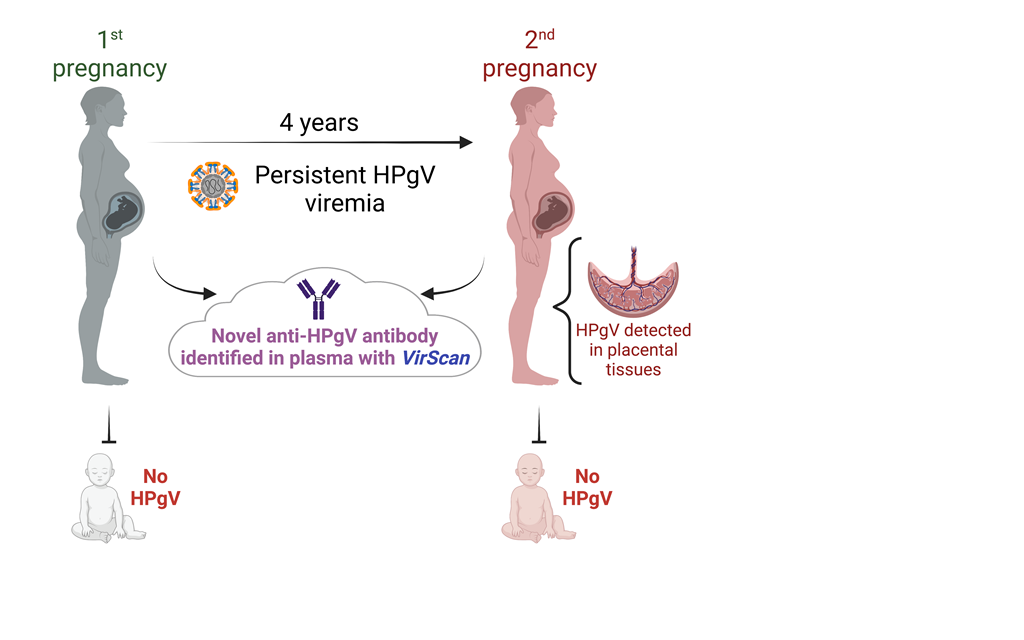Human pegivirus (HPgV) is best known for persistent, presumably non-pathogenic, infection and a propensity to co-infect with human immunodeficiency virus or hepatitis C virus. However, unique at-tributes, such as the increased risk of malignancy or immune modulation, have been recently recognized for HPgV. We have identified a unique case of a woman with high levels HPgV infection in two preg-nancies, which occurred 4 years apart, without evidence of human immunodeficiency virus or hepatitis C virus infection. The second pregnancy was complicated by congenital heart disease. A high level of HPgV infection was detected in maternal blood from different trimesters by RT-PCR and identified as HPgV type 1 genotype 2 in both pregnancies. In the second pregnancy, the decidua and intervillous tissue of the placenta were positive for HPgV by PCR but not the chorion or cord blood (from both pregnancies), suggesting no vertical transmission despite high levels of viremia. The HPgV genome sequence was remarkably conserved over the 4 years. Using VirScan, sera antibodies for HPgV were detected in the first trimester of both pregnancies. We observed the same anti-HPgV antibodies against the non-structural NS5 protein in both pregnancies, suggesting a similar non-E2 protein humoral immune response over time. To the best of our knowledge, this is the first report of persistent HPgV infection involving placental tissues with no evidence of vertical transmission. Our results reveal a more elaborate viral-host interaction than previously reported, expand our knowledge about tropism, and opens avenues for exploring the replication sites of this virus.

